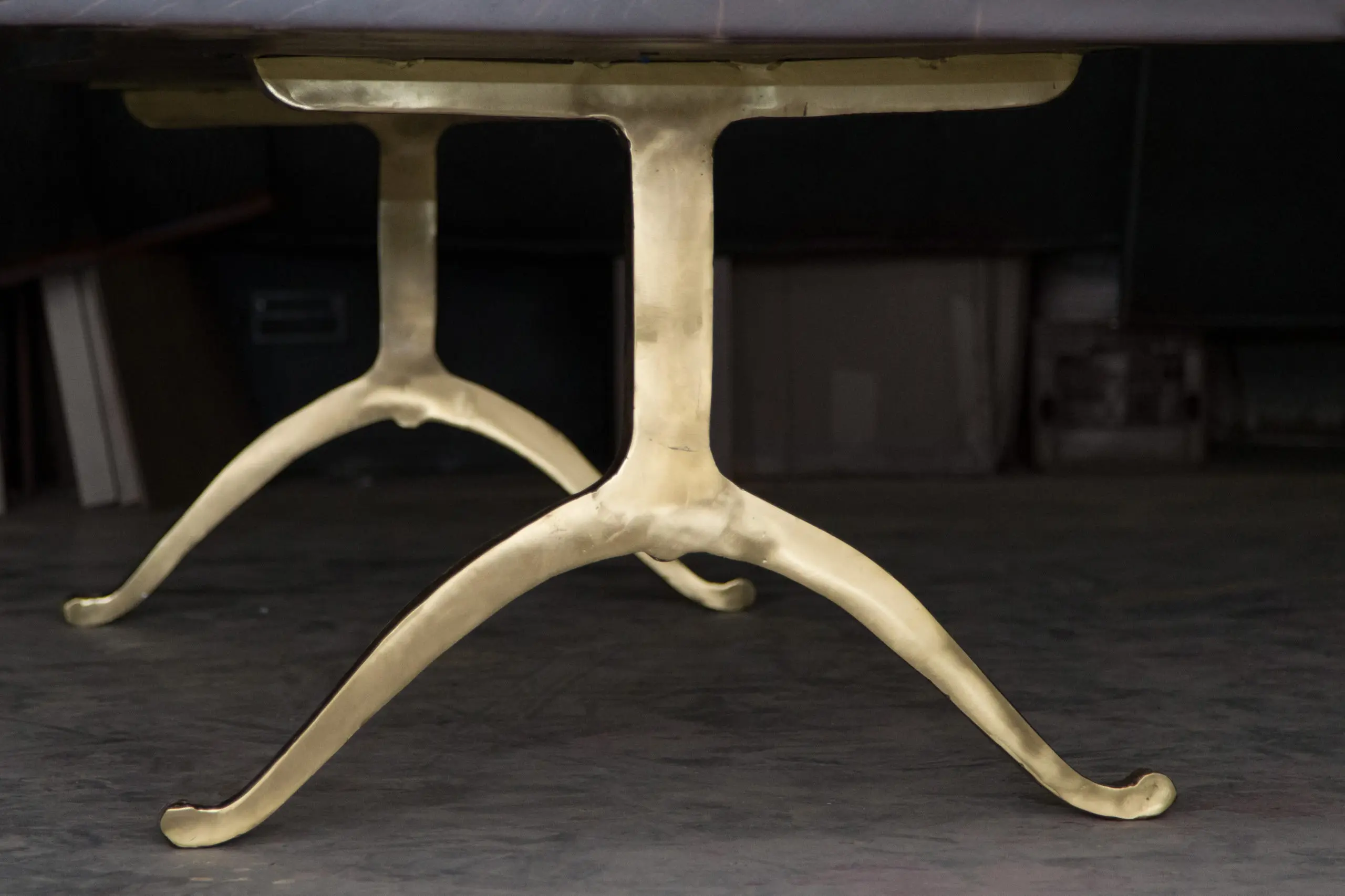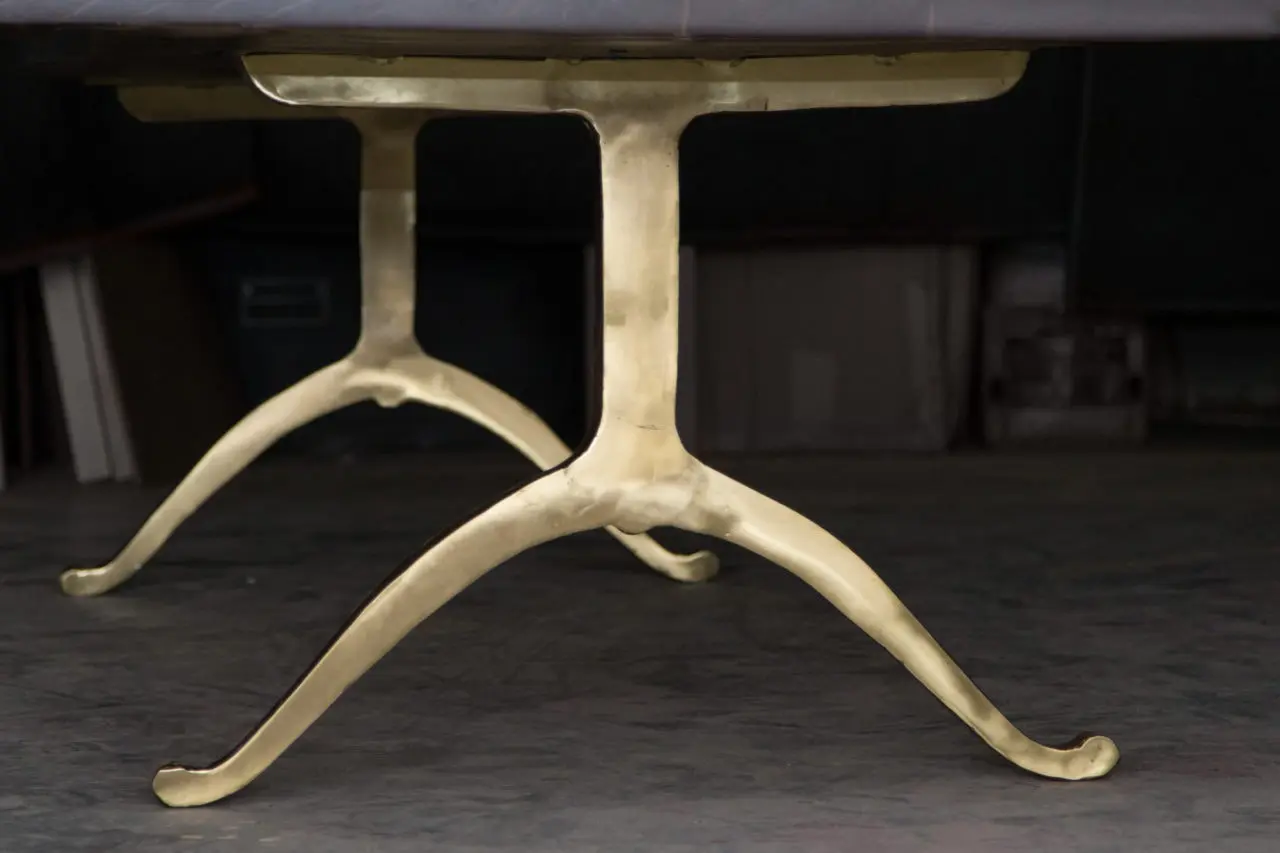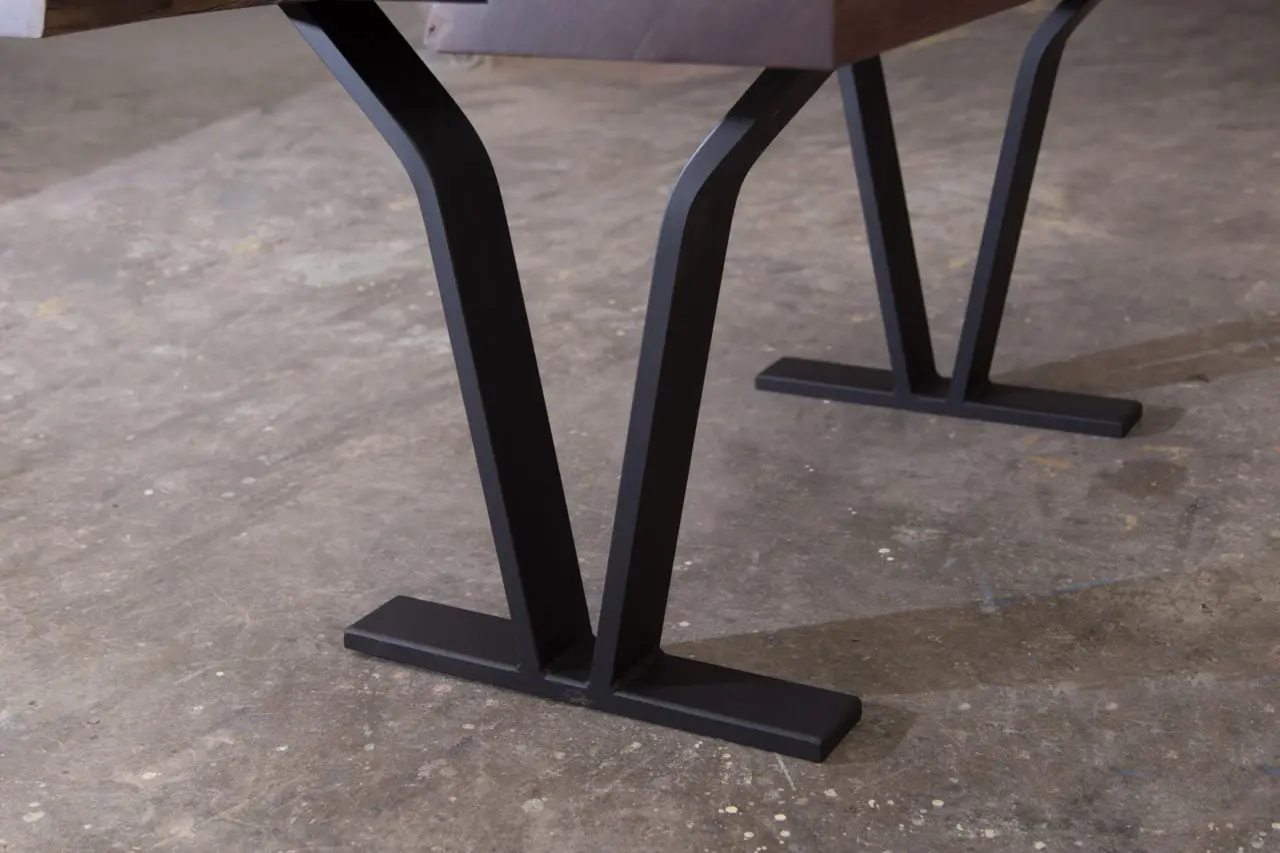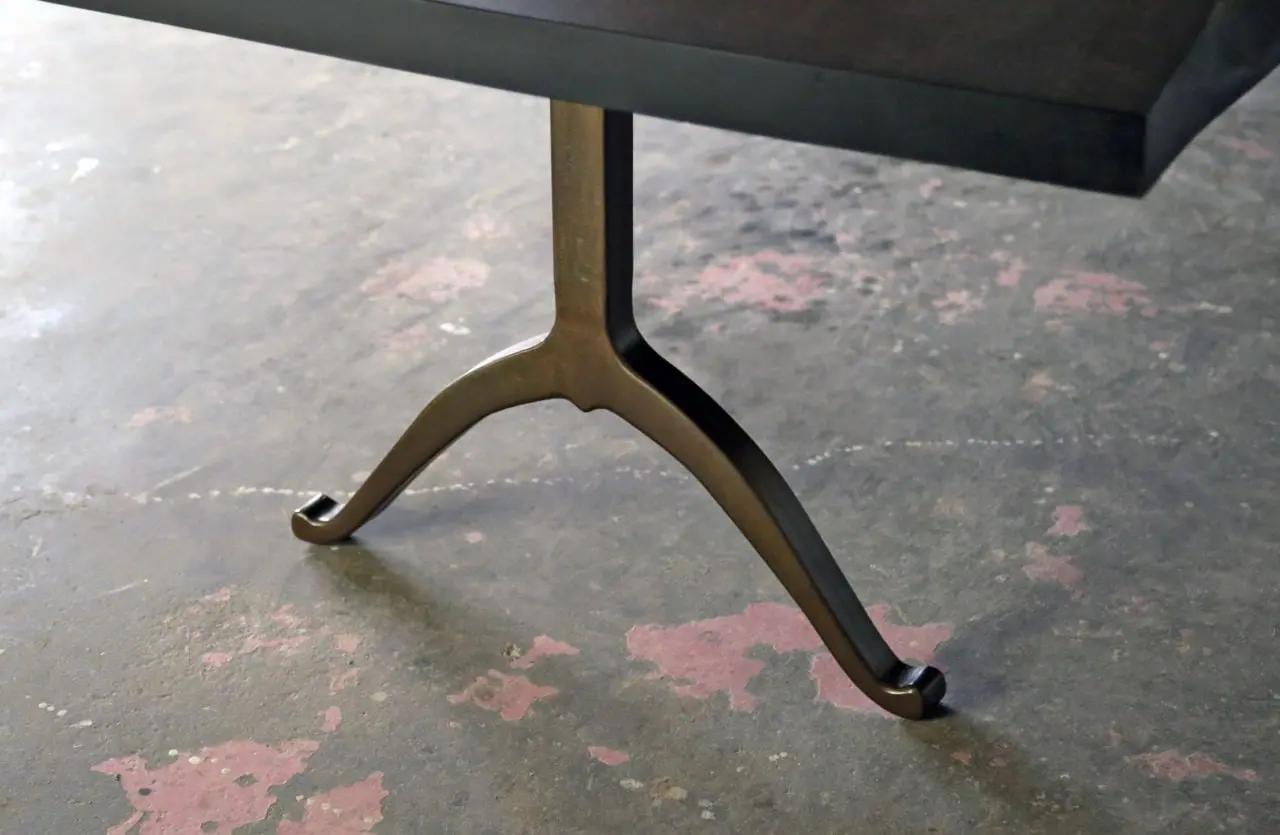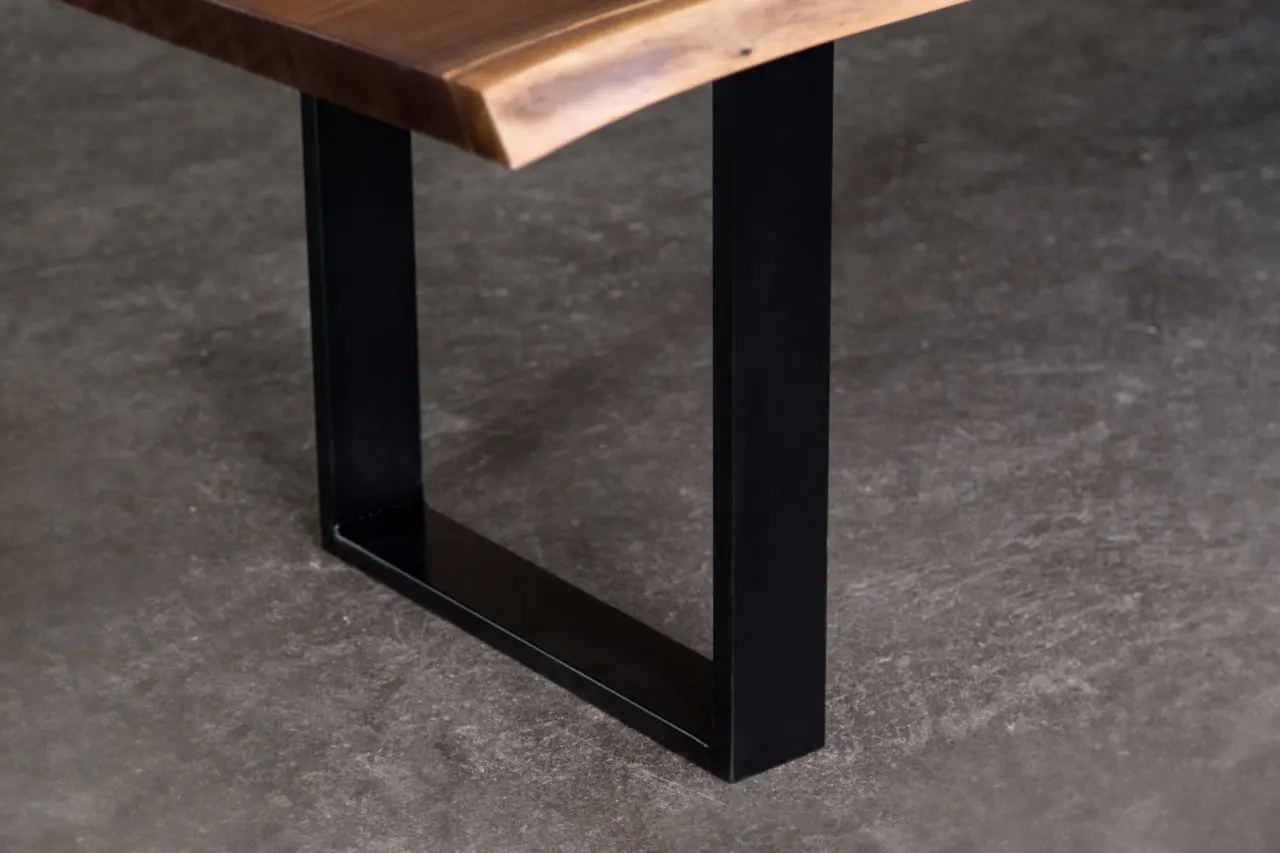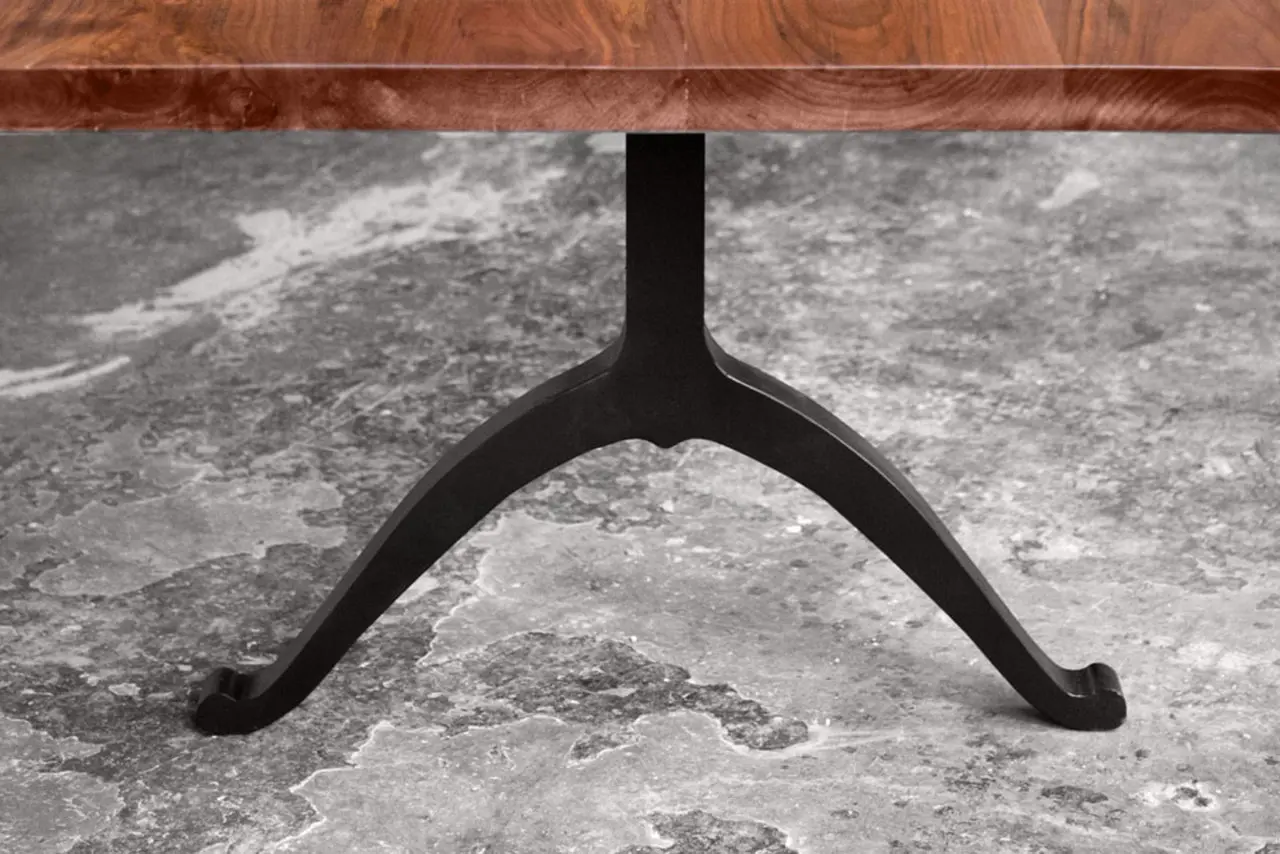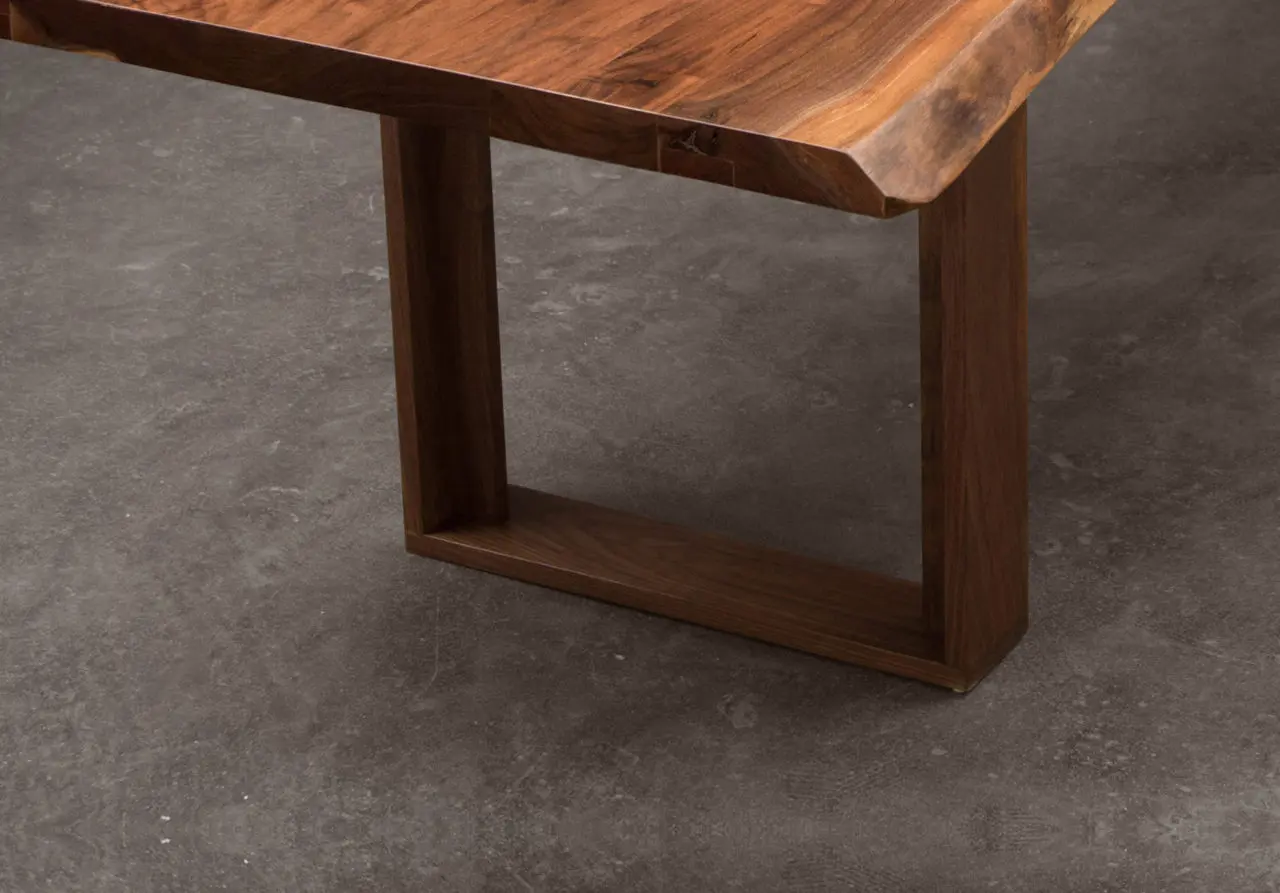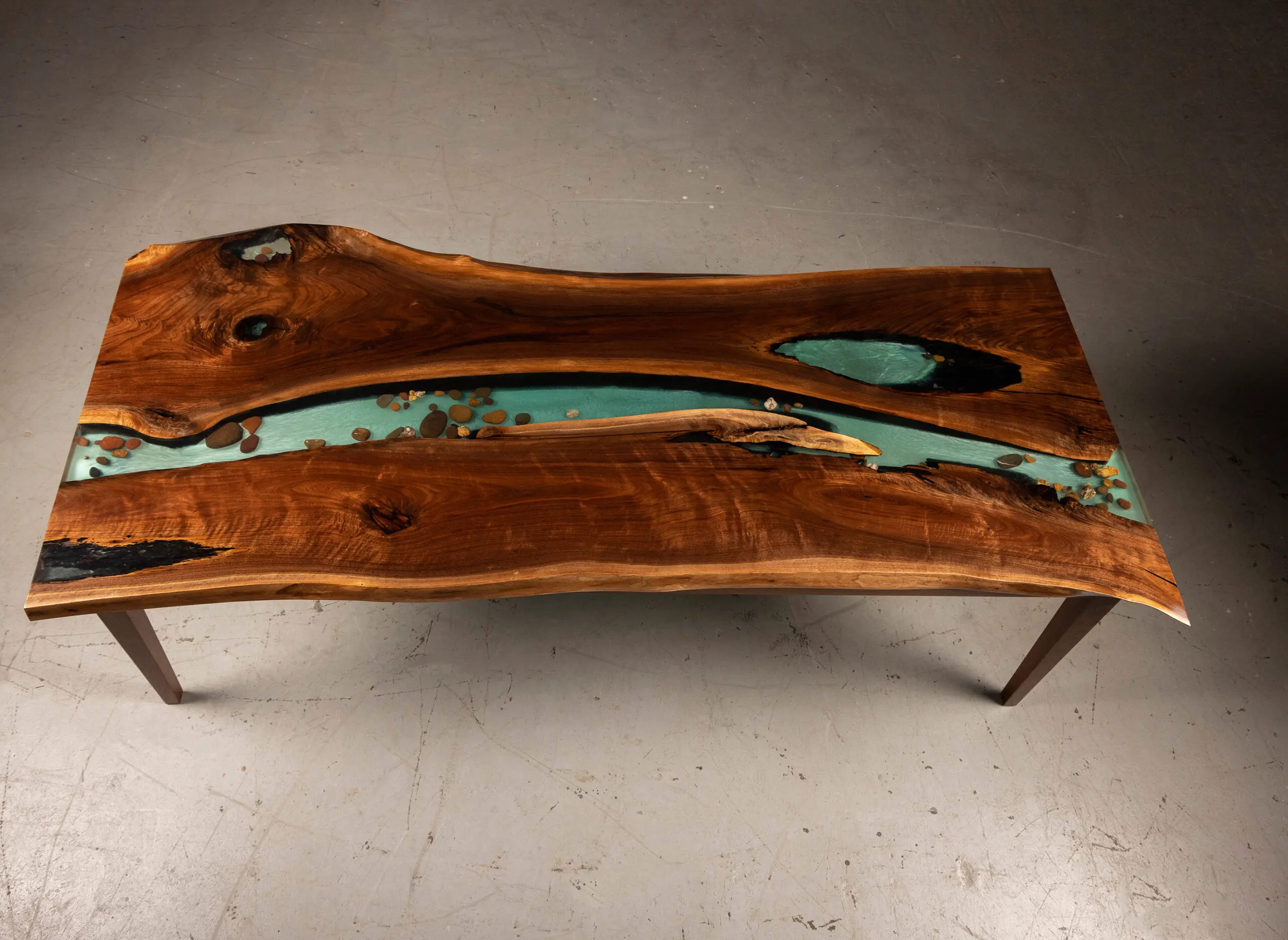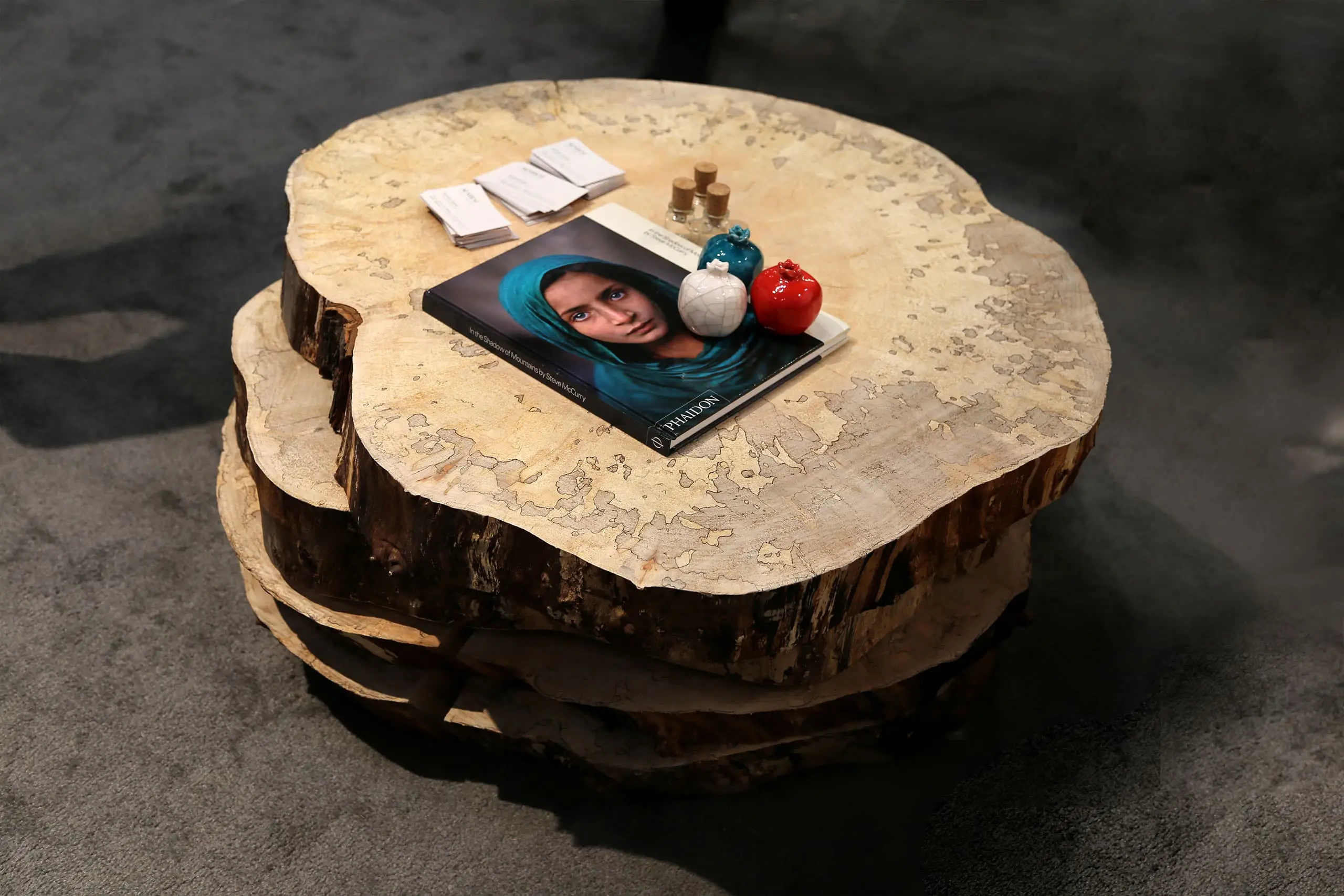The live edge dining table is a signature piece of interior design displaying nature in its truest form and beauty. Borrowing from hardwood species, it embraces organic edges and imperfections to introduce generational and unique heirloom furniture. Open to unlimited customization options, the live edge table is the finest art project any craftsman embarks upon while balancing the delicate interplay of style and function. In this article, we explore the delicate harmony between live edge tabletop and legs, to achieve a visual centerpiece with timeless design.
The live edge tabletop as an expression
of fine craftsmanship
The custom live edge dining table is a luxurious canvas for artistic expression. Live edge slabs prove far more difficult to work with than traditional lumber but allow for a breadth of options. The entire process, from selection to woodworking, has to deal with a series of constraints that make a unique, one-of-a-kind product.
The process dispenses with traditional cuts to expose the organic form of the tree. Thus permanently recorded, the tree continues to live on, becoming a testament to fine domestic species in full splendor. From black walnut and maple to oak and redwood, each tabletop narrates a different story.
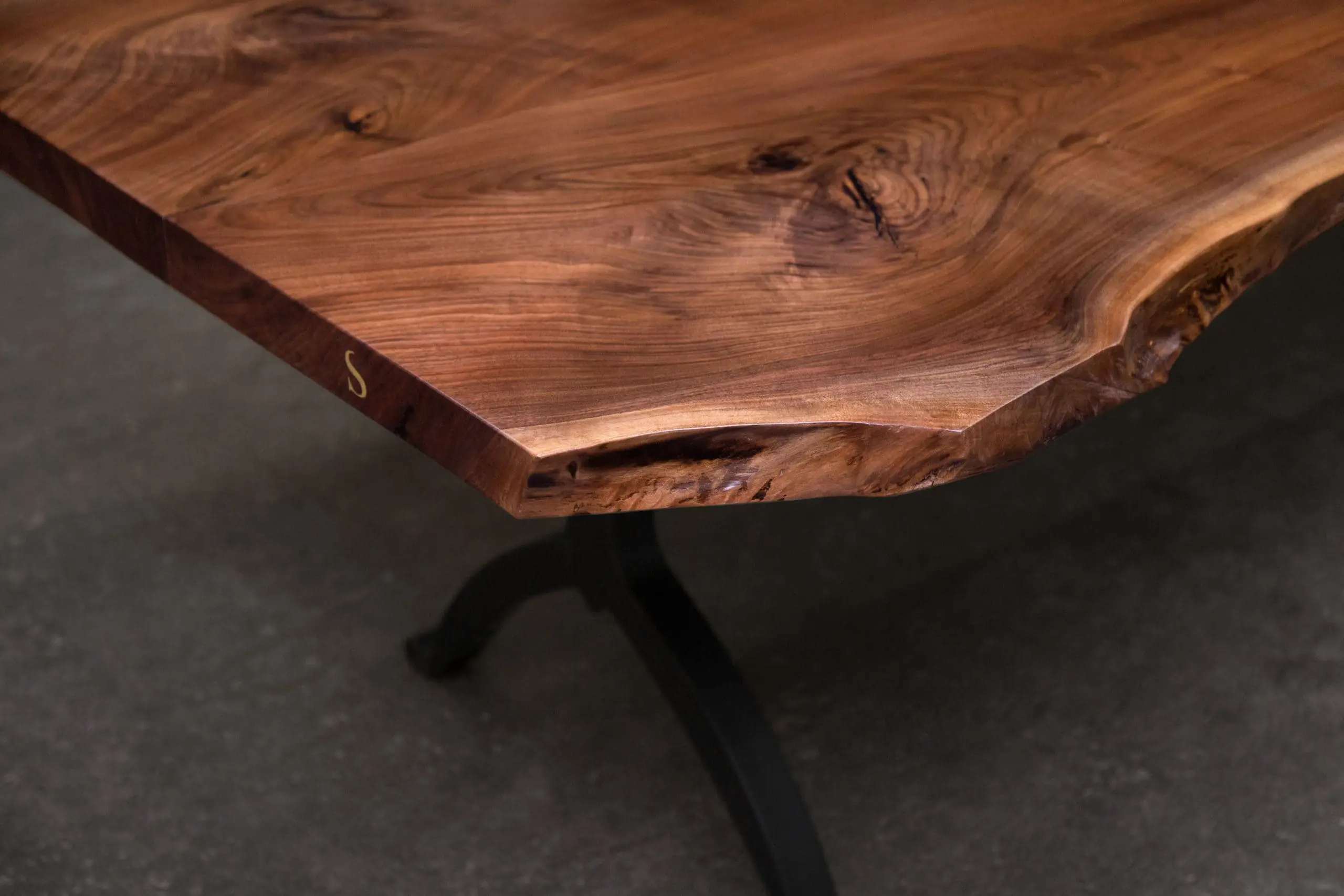
Live edge tabletop design
Live edge tabletop slabs can be used in a variety of ways, preserving their signature highlight, the outermost edge. Residential décor, for example, is far more lenient in terms of knots, nooks, and imperfections, embracing the single slab for all of its eccentric glamour. Commercial dining, on the other hand, often demands specific width dimensions and uniformity across their layout, which is impossible to achieve without the addition of slabs between the live edge pieces.
Some designers prefer organic forms taken directly from the cross-section of the trunk and the branches, as they allow for a unique, dynamic visage. Others find beauty in symmetry, going for rectangular shapes that represent structured creativity and tamed nature. The juxtaposition between visual interest and function is notoriously hard to settle and is specific to each project.
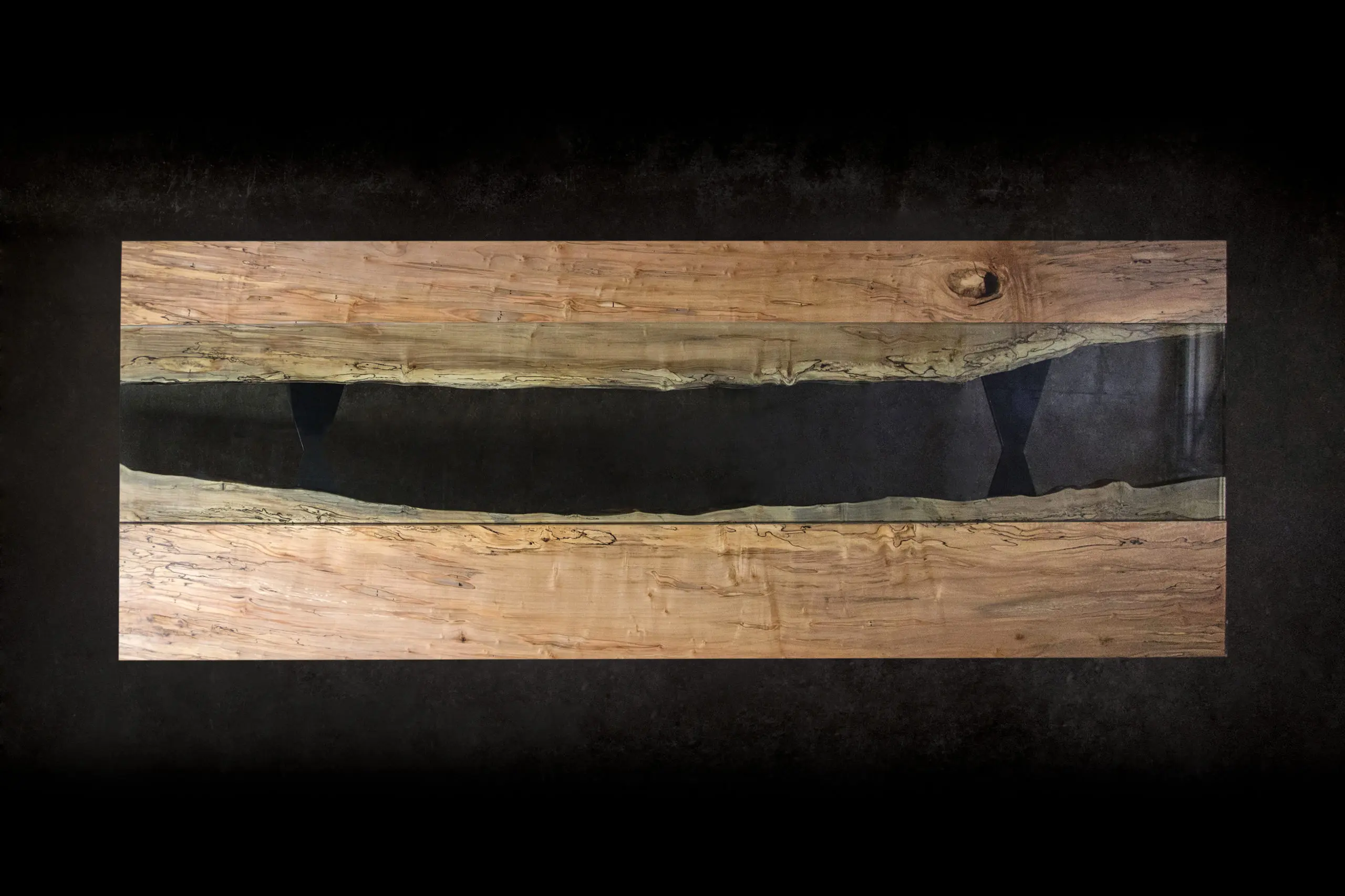
Sizing considerations
Live edge slabs come in different shapes and sizes, so it is vital to recognize the need for expert craftsmanship in order to create a tabletop of specific dimensions. We can find single slab live edge wood or join two slabs from a single tree in a symmetric way to achieve a particular width requirement. This book matched tabletop is polished to perfection, giving the impression of a solid monumental piece.
For extra wide live edge tables, we can add solid wood boards in the middle, with two live edge slabs on either side to achieve a natural, organic look.
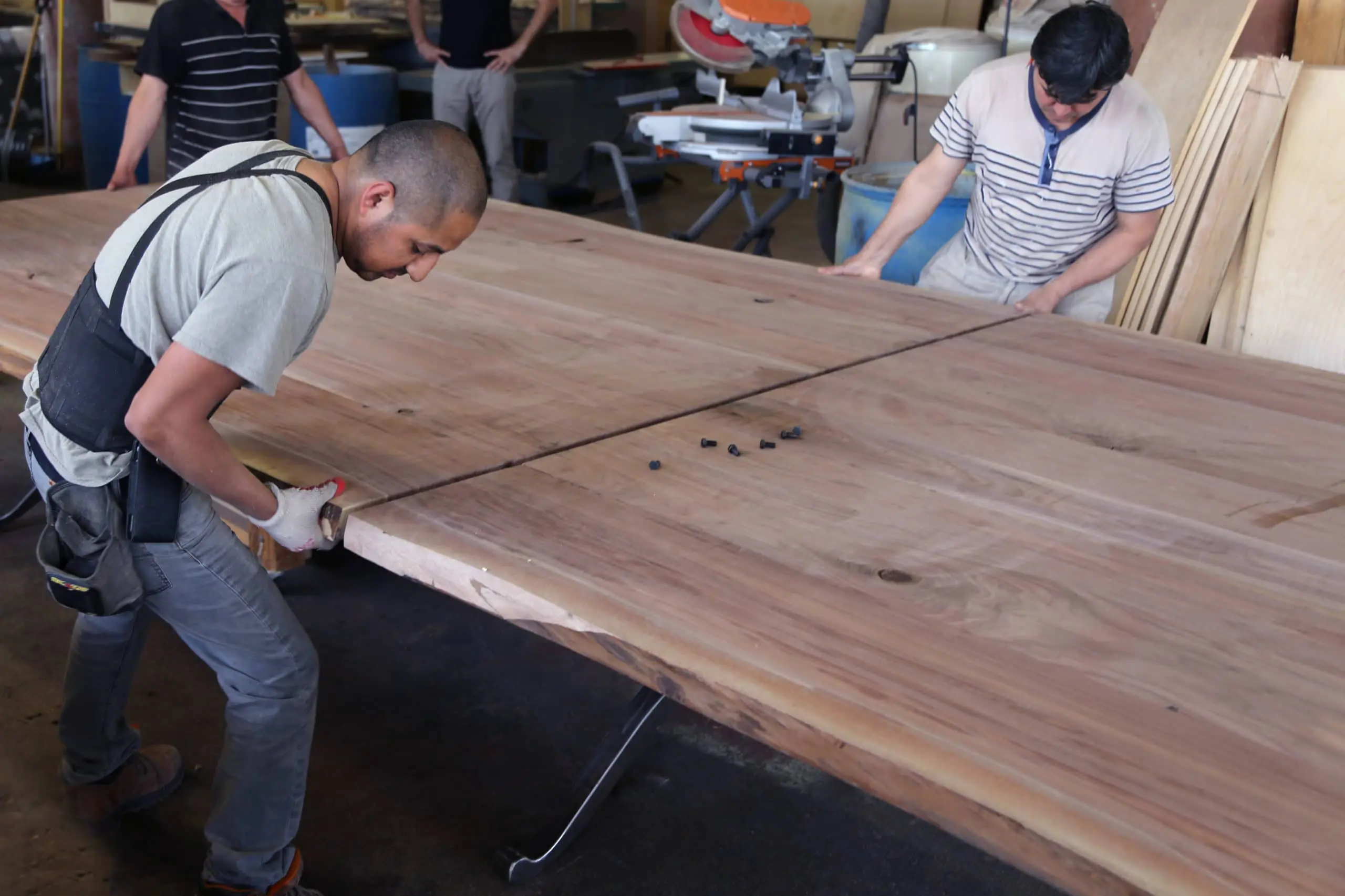
Color variations in live edge tabletops
As we finish the live edge slab, we can substantially change its color to either match or contrast the overall design environment. While some clients would prefer a color scheme that blends in, others would appreciate a focal piece of furniture that stands out and draws attention.
We also create color variations based on the pairing between the tabletop and the base, where we match or contrast with great precision. This is especially useful when clients order different hardwood species for the tabletop and the base, for practical or budgeting considerations.
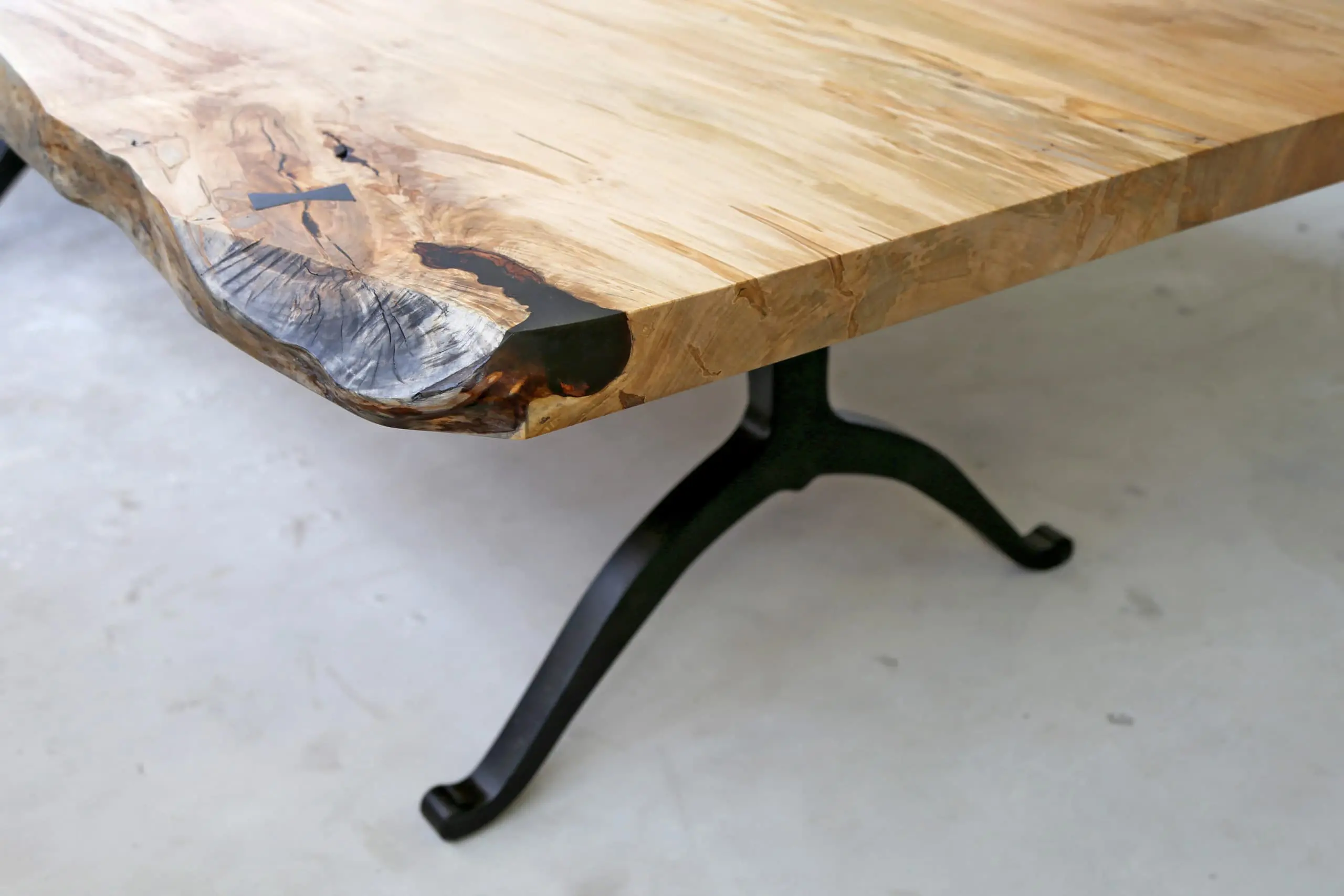
Tabletop imperfections can inspire art
Live edge slabs have a rich history, displayed through an array of knots, cracks, and imperfections. Sometimes, they are too large to completely remove. When the imperfection is integral to the structural integrity of the tabletop, it becomes a decorative embellishment. Treated carefully, it adds to the visual gravity of the overall design, distinguishing the final product even further.
In many cases, cracks might appear at the end of the slab, compromising the structural integrity. To prevent them from expanding in the future, craftsmen will add wooden or metal bows that either complement or starkly contrast the natural grain pattern. Metal options such as brass can match the base material, creating a memorable aesthetic impression.
When the nooks and crannies are prominent, or the slab itself is fragmented beyond repair, it inspires a novel form that welcomes ingenuity. The epoxy river table is an especially attractive solution where the original insufficiency is replaced with a decorative excess, to create a stunning live edge epoxy tabletop.
Whatever the case, it is best to start with a perfectly milled slab, that is at least three inches in thickness, for it can handle the subsequent changes that take place during the drying process. This is especially true when clients want sapwood highlights, as it is easy to chip away.
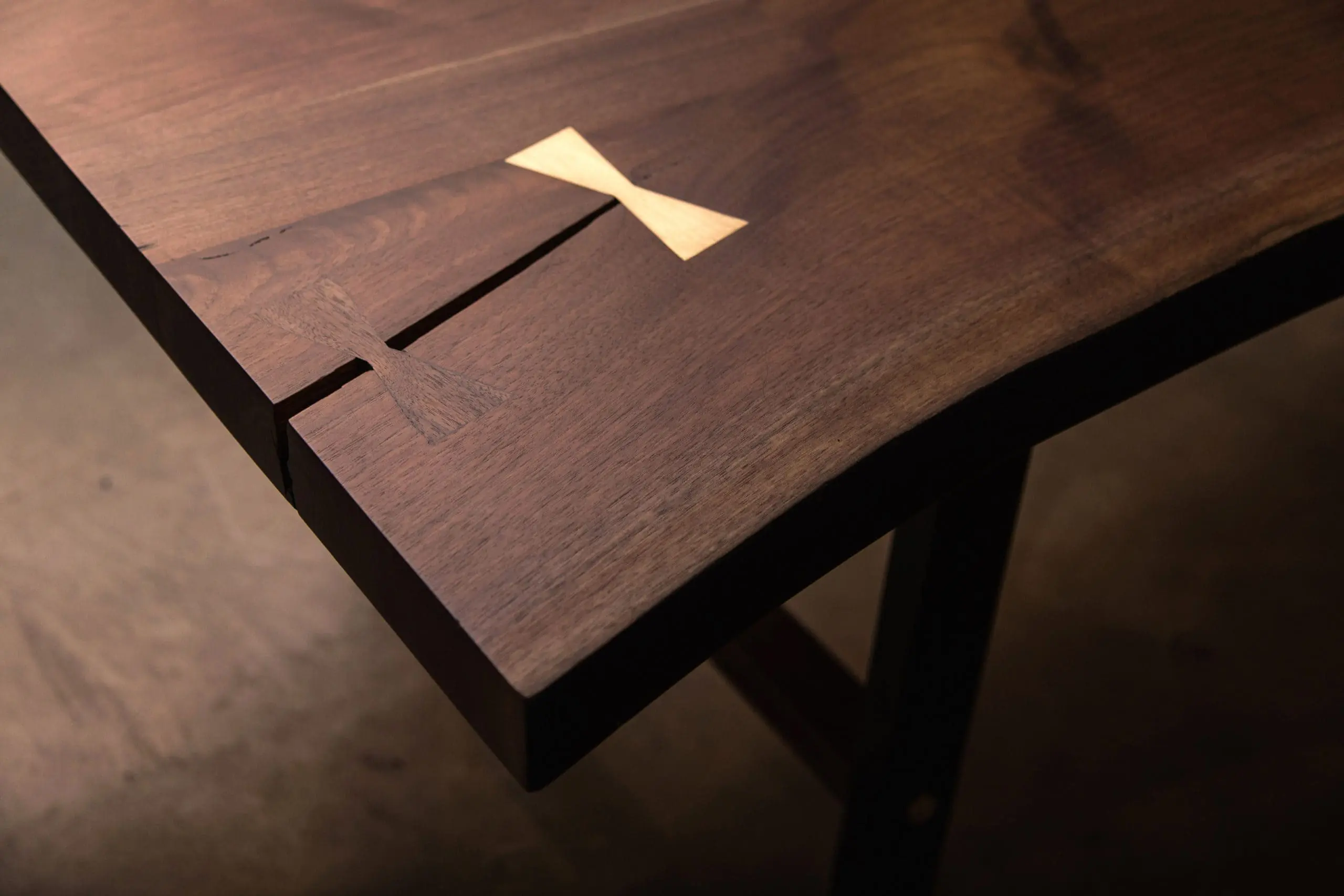
Live edge table legs
Handmade furniture from solid wood is often perceived as rustic. But the organic shape of the live edge table lends itself to more modern designs. For this purpose, manufacturers avoid pairing the tabletop with a heavy base, as it might distract from the slab, and overload the visual concept. Bases, therefore, often come in a variety of steel combinations, representing angular and basic geometric forms.
Wooden bases
The wooden table base, although rare, might be perfectly paired with a solid wood dining bench. However, craftsmen must pay attention to wood movement along the grain. Slabs expand and contract due to environmental factors, and opposing grain placement between the base and the tabletop is an invitation for swelling and cracks.
The wooden base will require more maintenance than its steel counterpart, but it will do with much less care than the tabletop. We have written about live edge table maintenance before, detailing hardwood species, finishing options, and use case scenarios.
Some of the most common options for wooden bases include solid wood slab legs, or wooden frames, both of which project elegance and sophistication.
Steel table legs
The live edge dining table with steel legs is representative of its class. Steel adds a predominantly rustic yet refined look, and can be designed with a matte black or glossy finish. Manufactured by hand, this option provides infinite room for creative expression.
Furniture manufacturers can use weathered steel, blackened steel, polished steel, or bare steel, to create a variety of shapes to perfectly support and balance the heavy tabletop. Combinations with brass or gold, silver, and copper leaf are equally attractive.
Other metals can enrich the visual narrative as well. Solid brass and bronze legs, for example, are also common despite their premium price.
Pedestal tables
The live edge round dining table is best designed with V-shaped or wishbone legs, especially when it has a smaller diameter. The single slab, with its sophisticated grain patterns, sapwood, and organic shape, is nicely complemented by a strong and sturdy base, which is thick enough to capture attention as it flows naturally to the imposing tabletop. A statement of high-end furniture, the round live edge table symbolizes balance and sturdiness that flow over to the rest of the dining room.
Frame legs
Frame legs can be designed as squares and trapezoids with thick metal construction. When interior designers aim for minimalism and refined simplicity, this is the preferred option. Designed in concert with the tabletop, they represent a sturdy base that supports the visual primacy of the live edge slab. SENTIENT can also manufacture frame legs from premium hardwoods with incredible tensile strength and matching finish, that blend perfectly with the overall design concept. These dining tables combine with solid wood pieces throughout the interior and represent an artistic highlight of luxury furniture.
Trapezoid legs
Trapezoid legs are excellent for places where interior decorators want to use transparency without sacrificing the aesthetic appeal of certain materials. These bases, available in both metal and wood, offer integrity, durability and visual interest that is hard to match.
The live edge tabletop – an artistic highlight
of biophilic design
The rustic appeal of the organic wood slab is visually unmatched. It dominates dining room layouts and restaurant areas, through a commitment to nature-centric design and fine craftsmanship. The combination of a live edge tabletop and a strong metal base redefines luxury residential dining and upscale venues, to introduce a visual symphony that is rustic and modern at the same time. This is why we enjoy bringing unique design visions to life, honoring quality American hardwoods, and appreciating our indispensable Brooklyn-based talent. Call 1 (347) 309-6217 to discuss your project, or visit our gallery space and workshop at 276 Greenpoint Avenue, Brooklyn, NY.

